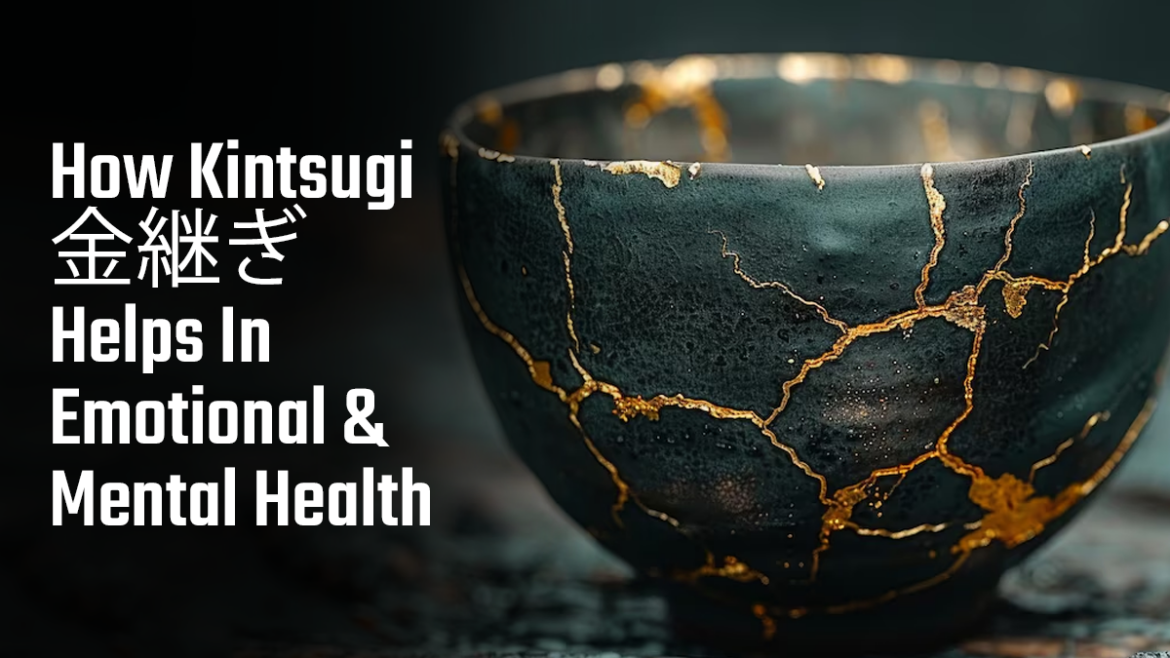In today’s world, people often try to hide their flaws and aim for perfection. However, the ancient Japanese art of Kintsugi offers a different and inspiring way to look at life. Kintsugi, which means “golden joinery,” is the art of fixing broken pottery using lacquer mixed with gold, silver, or platinum. Instead of hiding the cracks, it makes them stand out, turning the flaws into something beautiful.
This philosophy teaches us an important lesson: breakage and repair are part of an object’s story and should be celebrated, not hidden. It reminds us that imperfections can make things more valuable and unique. To understand how this idea can help in real life, especially with emotional and mental health, we spoke to an expert who shared insights on how Kintsugi’s lessons can improve our well-being.
How Does Kintsugi Help In Human Emotion?
-1737633571355.jpg)
Shaikh Uzma Jamal, Emotional Fitness Coach, Founder – Educate To Elevate, Lucknow, explained Kintsugi as a beautiful Japanese art form. It involves repairing broken pottery by filling the cracks with gold and other precious metals. She explains, “While it may seem like a unique way to make a broken pot look attractive, it teaches us important lessons about life.”
The expert elaborates on the philosophy behind Kintsugi: “At first glance, using gold to fix a clay pot that seems worthless might seem odd. However, in some Japanese beliefs, imperfections are seen as part of an object’s character. The repaired pottery tells its own unique story of how it broke and became something even more beautiful.”
She continued “Just like the pottery, our emotional scars can be viewed as stories of resilience, filled with ‘gold.’ The challenges we face help us discover our true potential. Kintsugi encourages us to embrace our flaws and hardships as chances to grow stronger.”
Kintsugi’s philosophy helps shift our views on failure and pain. It allows us to accept our mistakes, lessen self-criticism, and practice self-compassion while staying true to ourselves. As an Emotional Fitness Coach, the expert sees it as a philosophy that inspires hope, self-acceptance, and the belief that healing can create beauty in even the most broken parts of life.
ALSO READ: What is the Kaizen technique? Exploring The Japanese Philosophy That Helps in Mental Well-Being
Mental Health Benefits of Kintsugi
Below are a few benefits of the Japanese philosophy of Kintsugi.
Promoting Mindfulness: Kintsugi encourages mindfulness, helping individuals focus on the present instead of past regrets or future worries. This practice can lead to a calmer mind, which is crucial for managing anxiety and depression. Acknowledging Imperfection: Kintsugi teaches that setbacks are part of life. By viewing challenges as growth opportunities, individuals can shift their perspective, especially those recovering from trauma or mental health issues. Building Resilience: Repairing pottery symbolises resilience. Just as broken pieces can become beautiful again, people can learn to embrace their emotional wounds as part of their life story, fostering strength and courage. Encouraging Self-Reflection: Kintsugi promotes self-reflection, helping individuals understand their experiences and the root causes of their emotional pain, which aids in healing and personal growth. Creating Community Connections: Participating in Kintsugi workshops fosters connections with others facing similar struggles. These shared experiences provide essential support and validation on the journey to mental wellness. Conclusion
Kintsugi is more than just an art form; it is a powerful metaphor for healing and acceptance. By embracing the philosophy behind Kintsugi, individuals can cultivate a deeper understanding of their emotional scars and learn to appreciate their unique journeys. This approach not only supports mental wellness but also fosters a greater sense of connection to oneself and others, ultimately leading to a more fulfilling life.


AloJapan.com